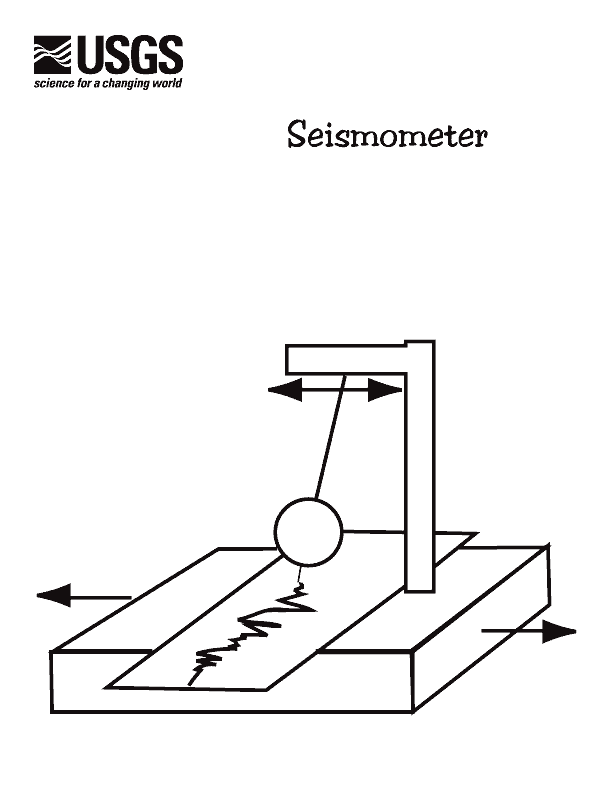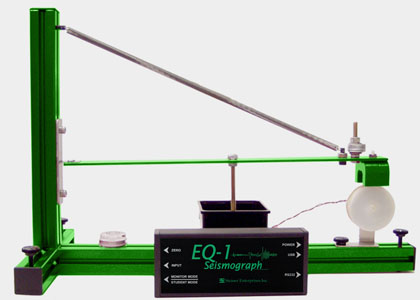The Seismometer at Northwestern University is used to detect and measure ground motions generally generated by earthquakes. The basic design of a seismometer (as pictured below) consists of a mass attached to a frame through a spring system. The mass moves relative to the frame with a slight delay, due to the physics of the spring, when ground motion is present, which results in an output that is used to determine information about earthquakes. These outputs are timed so that the distance from the earthquake can be determined given a set of three or more seismometers.

Basic design of a seismometer with a mass attached to the instrument frame providing an output which varies with the motion of the ground Image source USGS website: http://earthquake.usgs.gov/learning/kids/coloring/seismograph.gif
The Northwestern University Department of Earth and Planetary Sciences acquired and installed an EQ1 seismometer (pictured below) in the spring of 2011 in the basement of Locy Hall. This particular seismometer is digital and therefore outputs data differently than a mechanical seismometer. The magnet at the end of the horizontal beam hovers over a coil (inductor) in which it creates a small voltage every time it moves. The beam moves with the ground motion on account of the spring that's holding up the beam. The small voltage created with the ground motion is sent to a computer and graphed on a display screen for easy access and data manipulation. Since the Department of Earth and Planetary Sciences is moving locations from Locy Hall to Northwestern Universities Technological Institute, the future location of the seismometer is to be determined and will likely result in the necessity of a future study to determine the sources of noise at its new location.

An EQ-1 seismometer similar to the seismometer used at the Northwestern Department of Earth and Planetary Sciences. Image Source IRIS Website: http://www.iris.edu/hq/sis/resources/seismometers


